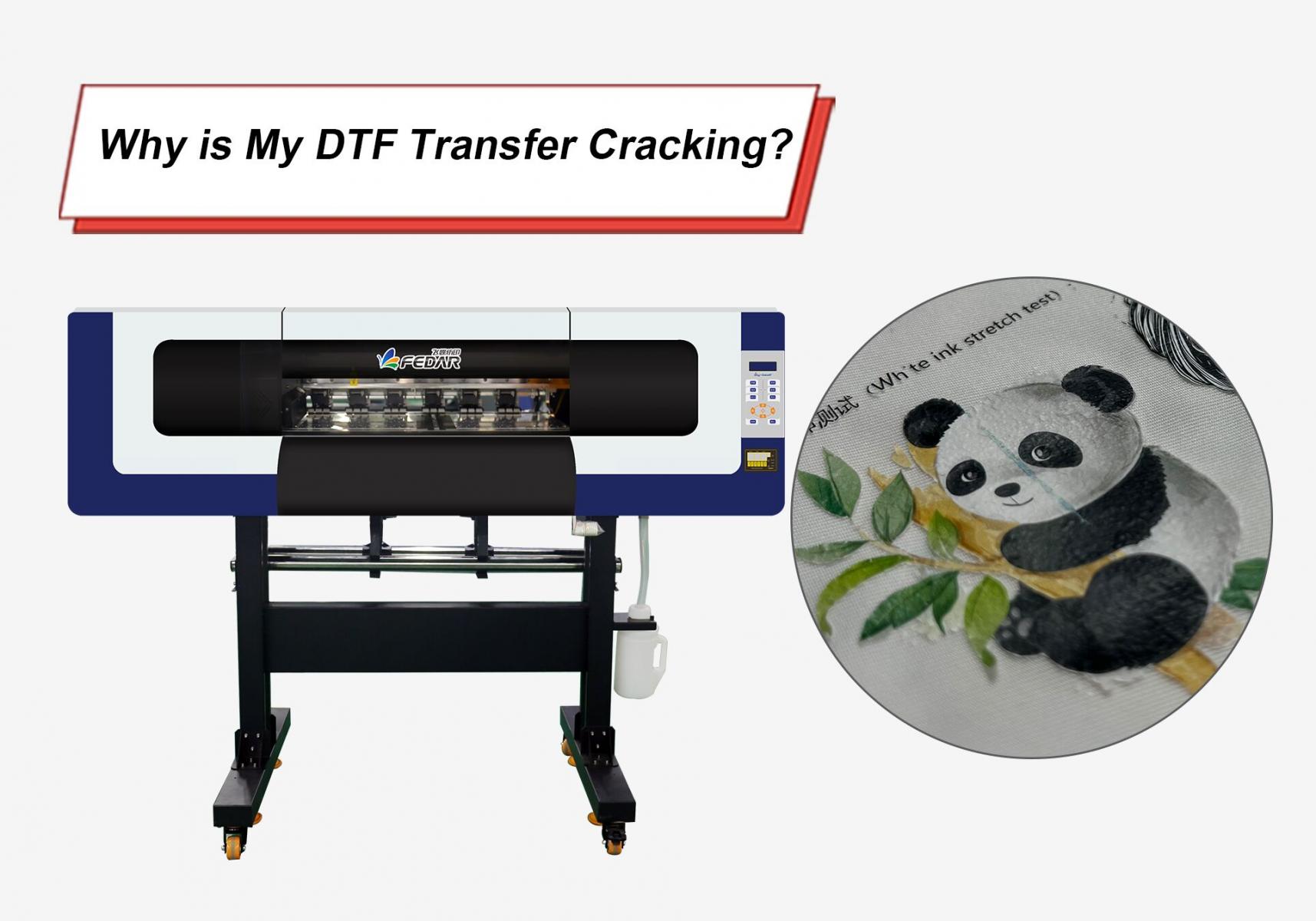10
Jun
You spend hours perfecting a design, press it onto fabric, and after all that effort, it cracks. Maybe it happens right away, or maybe after the first wash when your customer sends a frustrated email.
DTF printing has become incredibly popular among creators and small business owners, but cracking remains one of the most common issues that can turn your amazing designs into complete disasters. But not to worry, most cracking problems are totally preventable once you understand what's going wrong.
Pressure is another factor. Too little pressure and the transfer won’t fully stick, leaving you with weak spots that are just waiting to crack. But don’t go the other way and crank the pressure up all the way, too much can squeeze out the adhesive, so your design looks good at first, but fails after a few wears or washes.
Finding the right pressure is key. Most fabrics do well with medium to high pressure, but delicate ones might need a lighter touch. Once you get it right, you’ll notice your transfers holding up much better.
Don’t go for cheap films because they often lack the flexibility needed to move with the fabric, making them crack more easily.
The same goes for adhesive powders. If they’re not good quality, they can’t handle the wear and tear of daily life. It might seem like you’re saving money, but investing in quality materials pays off as your customers will notice the difference, and you’ll have fewer headaches.
Curing is where your transfer comes to life. If you skip or rush this step, you’re almost guaranteed to see cracks. The adhesive powder needs to be heated to the right temperature, usually between 320-350°F, to activate and form strong bonds with the fabric.
You can actually see when a transfer is perfect; look for a matte, slightly orange-white texture. If it is glossy or feels sticky, it needs more time under the press.
Some fabrics just do not work well with DTF transfers. Materials that shrink a lot in the wash can pull on the design and make it crack. Pre-shrunk cotton and cotton blends usually work the best.
Just avoid fabrics with heavy textures or water-repellent finishes, since these can mess with how well the adhesive sticks. Whenever you try a new fabric, do a test print first. It is a simple step that can save you from a lot of disappointment.
When you spot a crack, the first thing to do is figure out what caused it. Pay attention to where the cracks show up. If they are along the edges, you might have a pressure issue. If they are in the middle, it could be a temperature problem.
Check when the cracking appeared. The timing can give you clues about whether the issue was with your initial settings or the curing process. Perform the touch test, a properly cured transfer should feel smooth and well-adhered, not sticky or rough.
Cracking DTF transfers should not become a hurdle in your creative process. Once you understand what causes the problem, like temperature, pressure, and material quality, you can take steps to prevent it.
Stick to your process, troubleshoot when things go wrong, and always be willing to learn from mistakes. Investing in good materials and solid technique pays off with transfers that keep your customers happy and coming back for more. Good luck!
If there's anything we can do to further showcase machines' features, please let us know.
Email: sale@fedar.net
Whatsapp: http://wa.me/8615515715397
Our company has over 30 models of printers with independent intellectual property rights and patents. Marketed under the esteemed brands of Skycolor, Stormjet, and Fedar brands, these printers cover a wide range, including digital textile printers, UV printers, eco-solvent printers and more. Known for their exceptional quality and performance.
